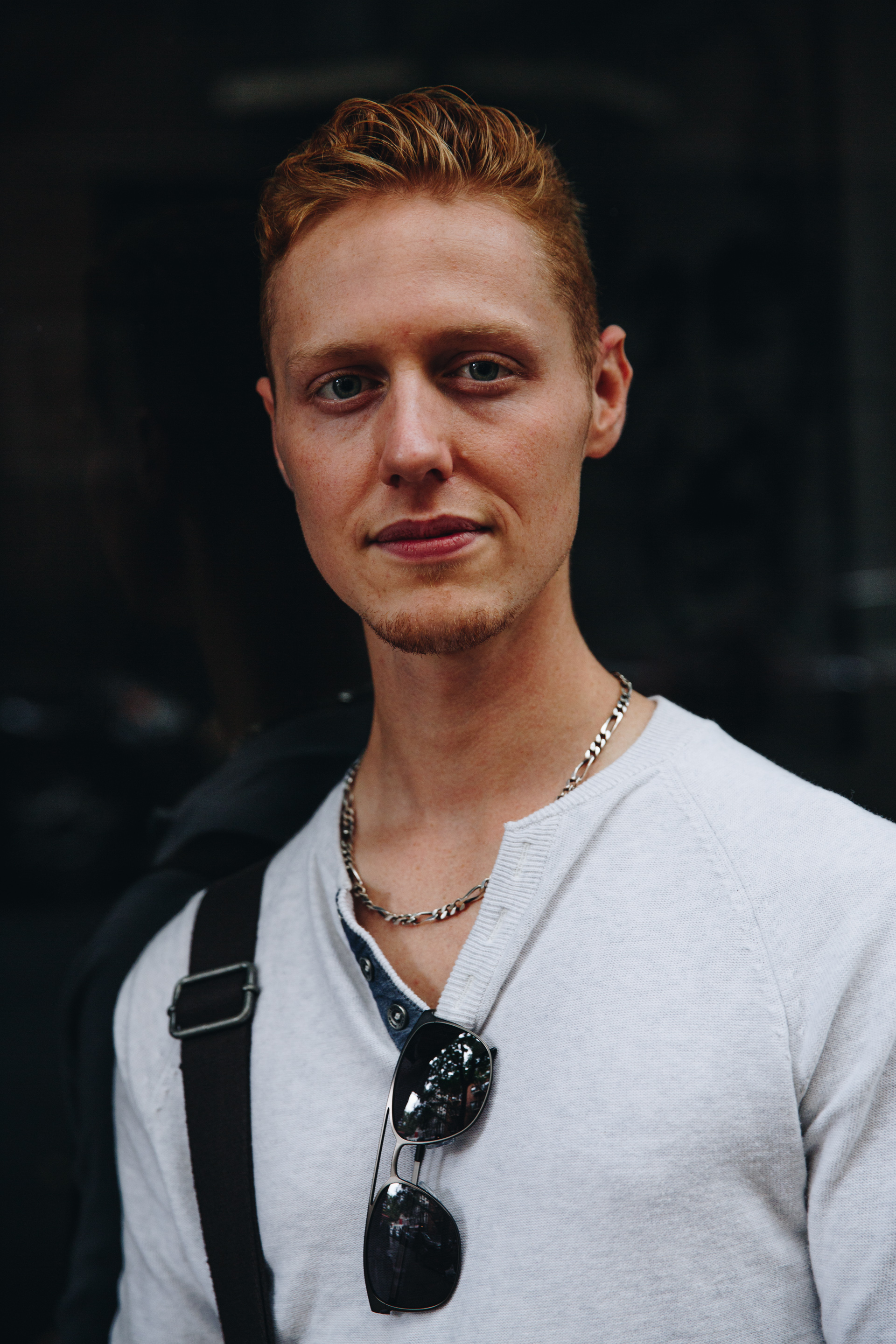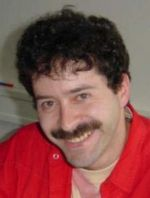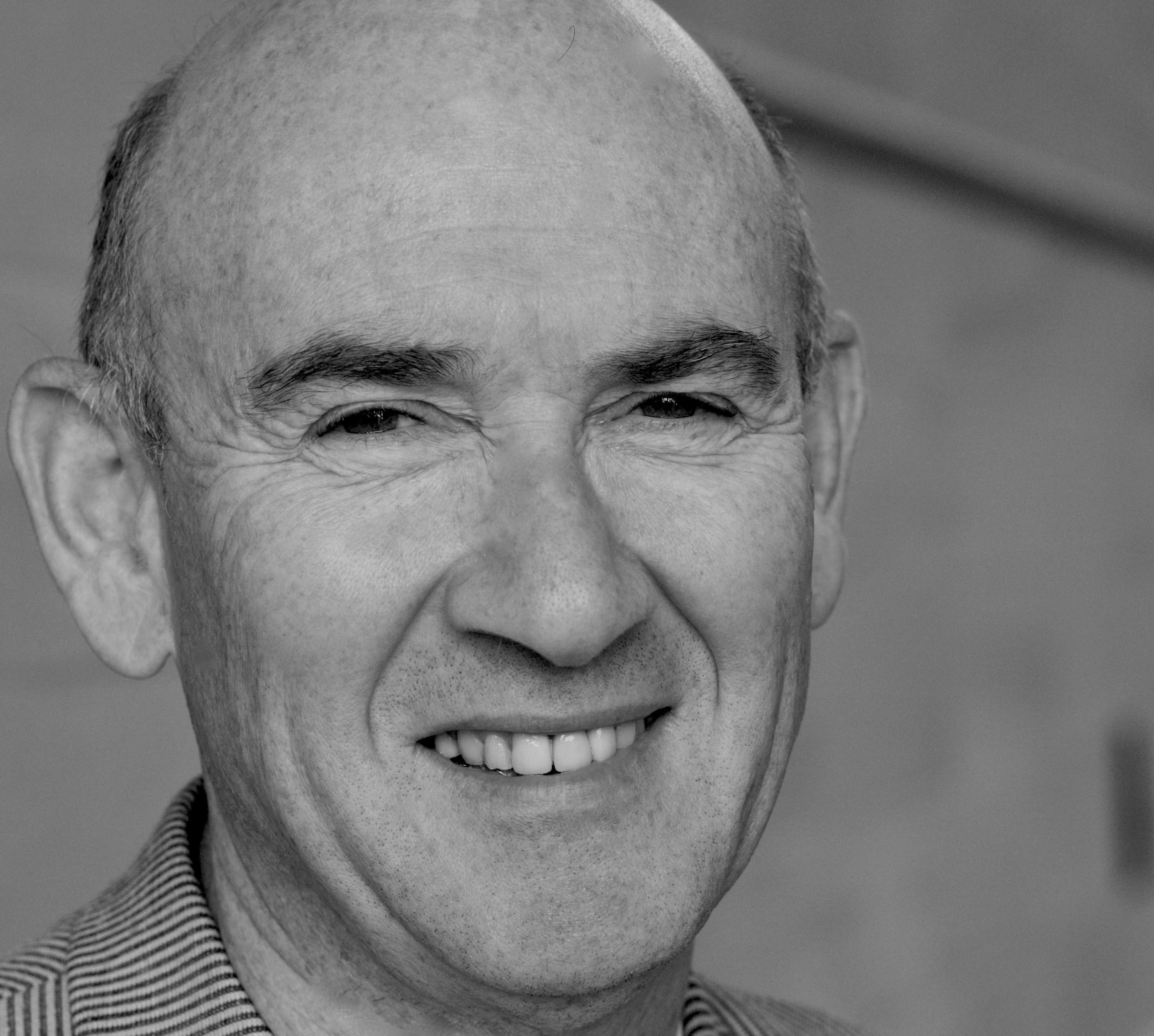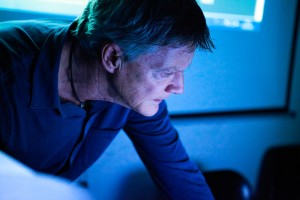- français
- English
Biographies 2019
Biographies
Paul Bourke
Patrick Donaldson
Alain Dufaux
Andrew Quinn
Jeffrey Shaw
Nikolaus Voelzow
 Paul Bourke: is an independent consultant based in Perth with an honorary research position at The University of Western Australia (UWA). After completing a Masters degree in Physics at Auckland University he worked at the School of Architecture developing, at the time, world leading quantitative lighting simulation and visualisation of architectural spaces. Moving to Australia in 1996 he was employed at the Brain Dynamics laboratory to develop high performance computing simulation and visualisation capabilities for the groups research into fundamental brain function, a research and publication stream that continues to today. The development of research into display systems and how one might leverage the human visual system for effective data visualisation started during his role as visualisation research fellow at the Swinburne Astrophysics and Supercomputing Centre. This included the development of large and multiple screen stereoscopic systems and hemispherical immersive displays for both research and public education. In 2006 Paul accepted a position as Associate Professor at UWA in supercomputing, responsible for visualisation at the Western Australia Supercomputing Facility, then known as iVEC. Paul become director of the UWA Centre in 2010, managing 25 staff with expertise across supercomputing, data management and visualisation. The Centre also operated the advanced visualisation systems for the University and acted as consultants for the application of visualisation in research groups across the four public Universities in Western Australia. In 2015 he moved to Sydney accepting a Professorial position at The University of New South Wales where he was part of the team established EpiCentre, a new world visualisation facility with world class infrastructure. In his current consultancy role Paul is continuing to develop novel and emerging data capture and visualisation technologies. The position at UWA is focused on how new and evolving technologies may be used to facilitate insight in research and public outreach in the field of Archaeology.
Paul Bourke: is an independent consultant based in Perth with an honorary research position at The University of Western Australia (UWA). After completing a Masters degree in Physics at Auckland University he worked at the School of Architecture developing, at the time, world leading quantitative lighting simulation and visualisation of architectural spaces. Moving to Australia in 1996 he was employed at the Brain Dynamics laboratory to develop high performance computing simulation and visualisation capabilities for the groups research into fundamental brain function, a research and publication stream that continues to today. The development of research into display systems and how one might leverage the human visual system for effective data visualisation started during his role as visualisation research fellow at the Swinburne Astrophysics and Supercomputing Centre. This included the development of large and multiple screen stereoscopic systems and hemispherical immersive displays for both research and public education. In 2006 Paul accepted a position as Associate Professor at UWA in supercomputing, responsible for visualisation at the Western Australia Supercomputing Facility, then known as iVEC. Paul become director of the UWA Centre in 2010, managing 25 staff with expertise across supercomputing, data management and visualisation. The Centre also operated the advanced visualisation systems for the University and acted as consultants for the application of visualisation in research groups across the four public Universities in Western Australia. In 2015 he moved to Sydney accepting a Professorial position at The University of New South Wales where he was part of the team established EpiCentre, a new world visualisation facility with world class infrastructure. In his current consultancy role Paul is continuing to develop novel and emerging data capture and visualisation technologies. The position at UWA is focused on how new and evolving technologies may be used to facilitate insight in research and public outreach in the field of Archaeology.

Patrick Donaldson. After finishing his secondary education with a specialisation in physics and chemistry, Patrick decided to go down a completely different path. He went on to study graphic design at the University of Art and Design in Geneva. First completing a Bachelor’s in Visual Communication (2014), he then carried on with a Master’s in Media Design (2017) to further push his knowledge of interactive design with new technologies. This in turn brought him to develop projects such as: Ximoan, that allowed him and his team to participate in festivals around the world such as the festival de Cannes (2017) and the festival du nouveau cinéma in Montréal (2017) to name a couple; Massive, a game of four forces that teaches the fundamental interactions of our universe that won him the best student contribution prize at GSGS in Neuchâtel (2017) and was showcased in festivals such as the Salone del mobile in Milan (2017); Ilex, an interactive installation that evolves with the presence of spectators (2018).
Winner of the Hans Wilsdorf prize of excellence (2017) and the prize of excellence in design (2017) for his Master’s project, Patrick is now pursuing the creation of tools that help designers with AI. A research project that gathered interest and got him invited to speak at Tedx Geneva (2018). Fascinated by sciences, he will always seek to infuse such interests into his various projects. Self-taught in programming, he is always looking to develop his own tools for creative purposes. As well as being pro-efficient in tools such as the adobe suite, the whole generative design approach has allowed him to stand out in his field and view things differently. Working at the intersection of science, programming, and design, his dream is to develop projects that have the potential of positively impacting people in the field of education and/or entertainment.
 Alain Dufaux: Alain Dufaux's field of expertise is in signal processing for audio, with a dual profile in both academic (PhD in automatic sound recognition in 2001, lecturer & co-director for PhD students since 2007) and industrial worlds (low-power DSP specialist in the hearing aid industry during 6 years). He presently acts as the operations and development manager of the Metamedia Center at EPFL.
Alain Dufaux: Alain Dufaux's field of expertise is in signal processing for audio, with a dual profile in both academic (PhD in automatic sound recognition in 2001, lecturer & co-director for PhD students since 2007) and industrial worlds (low-power DSP specialist in the hearing aid industry during 6 years). He presently acts as the operations and development manager of the Metamedia Center at EPFL.
 Jeffrey Shaw: Professor Shaw has been a leading figure in new media art since the 1960's. In a prolific oeuvre of widely exhibited and critically acclaimed works he has pioneered and set benchmarks for the creative use of digital media technologies in the fields of virtual and augmented reality, immersive visualization environments, navigable cinematic systems and interactive narrative. Shaw was founding director of the ZKM Institute for Visual Media Karlsruhe (1991-2002), and in 2003 he was awarded an Australian Research Council Federation Fellowship to co-found and direct the UNSW iCinema Centre for Interactive Cinema Research. In 2009 he was appointed Dean of the School of Creative Media at City University Hong Kong, and currently he is Chair Professor of Media Art and Director of the CityU Centre for Applied Computing and Interactive Media in Hong Kong and Chengdu.
Jeffrey Shaw: Professor Shaw has been a leading figure in new media art since the 1960's. In a prolific oeuvre of widely exhibited and critically acclaimed works he has pioneered and set benchmarks for the creative use of digital media technologies in the fields of virtual and augmented reality, immersive visualization environments, navigable cinematic systems and interactive narrative. Shaw was founding director of the ZKM Institute for Visual Media Karlsruhe (1991-2002), and in 2003 he was awarded an Australian Research Council Federation Fellowship to co-found and direct the UNSW iCinema Centre for Interactive Cinema Research. In 2009 he was appointed Dean of the School of Creative Media at City University Hong Kong, and currently he is Chair Professor of Media Art and Director of the CityU Centre for Applied Computing and Interactive Media in Hong Kong and Chengdu.
 Andrew Quinn is an Australian computer graphics artist and musician, living in Milan. He has worked on digital effects for films such as “The Matrix”, “Tomb Raider”, “Dark City”, “Nirvana” and “Vajont”. In recent years he specializes in video installations for multi screen and immersive environments and also digital graphics for interactive dance productions and contemporary music, including the series Koine’ for Pommeriggi Musicale at Teatro Del Verme, Milano in 2011 andBiennale of Music in Venice in both 2012 and 2016 the latter a concert by the Ensemble Orchestral Contemporain, music by Grisey. His work in opera includes 3d stereoscopic virtual sets for a prodution of Bartok’s “Bluebeard’s Castle” for the Hungarian State Opera (2011) and also virtual sets with LED lighting for a production of Monterverdi’s “L’Orfeo” in Canberra in 2014. Orchestral work – he created sound reactive visuals for performances of Debussy’s “Children’s Corner” and “Pictures at an Exhibition” by Mussorgsky (2014). Video mapping – realtime audio reactive content for a video mapping performance where laser scanning techniques were used to model a traditional set (2014), also a festival performance at Arco della Pace, Milan (2017). Since 2014 he has performed regularly in Russia live visuals for leading contermporary composer Nikolay Popov, among others. At the 2015 Salone dei Mobili he created an interactive installation for Metrogramma studios. He is a regular performer for music festivals at the San Fedele Auditorium in Milano. He has published papers for the ASC (Australian Society of Computing) and has been interviewed for various online journals, including Backstage Magazine and the Music Biennale of Venice, 2012. Andrew Quinn has lectured at the Venice Biennale, Starts Program, IUAV Venice, IED and NABA Milano, Quasar Institute of Design Rome, the ANU Canberra, the Australian Film School Sydney and summer school for the UCLA. He runs courses for the leading live visuals software TouchDesigner from Derivative, Toronto. In january 2016 he runs a workshop at the Milan Conservatorium of Music followed by Monash University in Melbourne. In milan he created an innovative course in interactive media for teenagers – 10 lessons and final performance.
Andrew Quinn is an Australian computer graphics artist and musician, living in Milan. He has worked on digital effects for films such as “The Matrix”, “Tomb Raider”, “Dark City”, “Nirvana” and “Vajont”. In recent years he specializes in video installations for multi screen and immersive environments and also digital graphics for interactive dance productions and contemporary music, including the series Koine’ for Pommeriggi Musicale at Teatro Del Verme, Milano in 2011 andBiennale of Music in Venice in both 2012 and 2016 the latter a concert by the Ensemble Orchestral Contemporain, music by Grisey. His work in opera includes 3d stereoscopic virtual sets for a prodution of Bartok’s “Bluebeard’s Castle” for the Hungarian State Opera (2011) and also virtual sets with LED lighting for a production of Monterverdi’s “L’Orfeo” in Canberra in 2014. Orchestral work – he created sound reactive visuals for performances of Debussy’s “Children’s Corner” and “Pictures at an Exhibition” by Mussorgsky (2014). Video mapping – realtime audio reactive content for a video mapping performance where laser scanning techniques were used to model a traditional set (2014), also a festival performance at Arco della Pace, Milan (2017). Since 2014 he has performed regularly in Russia live visuals for leading contermporary composer Nikolay Popov, among others. At the 2015 Salone dei Mobili he created an interactive installation for Metrogramma studios. He is a regular performer for music festivals at the San Fedele Auditorium in Milano. He has published papers for the ASC (Australian Society of Computing) and has been interviewed for various online journals, including Backstage Magazine and the Music Biennale of Venice, 2012. Andrew Quinn has lectured at the Venice Biennale, Starts Program, IUAV Venice, IED and NABA Milano, Quasar Institute of Design Rome, the ANU Canberra, the Australian Film School Sydney and summer school for the UCLA. He runs courses for the leading live visuals software TouchDesigner from Derivative, Toronto. In january 2016 he runs a workshop at the Milan Conservatorium of Music followed by Monash University in Melbourne. In milan he created an innovative course in interactive media for teenagers – 10 lessons and final performance.
Other projects:
October 2016: “Deep Dream” an interactive mirror maze at the RomaEuropa festival
November 2016: “The Planets” by Holst performed by a 12 piece progressive rock ensemble.
June 2017: Bulgary – 6 screen projection, realtime 3d
October 2017: Electropark Festival Genova, VR, 4 screen installation, video mapping
June 2018: “Pictures at an Exhibition” prog rock version – Rialto Venice
June 2018: Wired Next Festival, Milano – visuals for Calibro35
June 2018: interactive dance project, ISEA Durban, “Eskin4” for the visually impaired. dir. Jill Scott
 Nikolaus Voelzow: Lead software engineer at eM+, Niko has been working as a developer of interactive installations as well as various other applications at the ZKM Institute for Visual Media Karlsruhe (2006-2011) and as independent consultant for artists, museums and other institutions, both in the cultural and commercial sector.
Nikolaus Voelzow: Lead software engineer at eM+, Niko has been working as a developer of interactive installations as well as various other applications at the ZKM Institute for Visual Media Karlsruhe (2006-2011) and as independent consultant for artists, museums and other institutions, both in the cultural and commercial sector.
- Ce wiki
- Cette page
